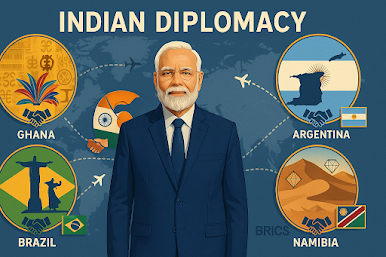Tea Export Disruption Hits Kolkata Port Amid Global Tensions
Date: June 2025
Location: Kolkata, West Bengal
☕️ Brewing Trouble: Iran-Israel Conflict Stalls Tea Shipments
A geopolitical flare-up in the Middle East is having ripple effects thousands of miles away in Kolkata. The Iran-Israel conflict has triggered a halt in Indian tea exports to Iran, leading to a mounting backlog of tea consignments at Kolkata Port and Mumbai's Nhava Sheva Port.
🍵 Why Iran Matters to India’s Tea Trade
Iran is India's second-largest buyer of tea, accounting for over 15% of India’s annual tea exports. The disruption has severely affected producers in Assam and West Bengal, who rely on the Iran market to offload premium orthodox tea varieties.
"Payments and shipments have come to a standstill. With the Gulf crisis escalating, containers are piling up with no assurance on customs clearance," said a leading Kolkata-based exporter.
📊 The Numbers Tell the Story
15% drop in exports projected for Q2 2025 if tensions persist
Over 500 containers stuck in transit at Kolkata and Nhava Sheva ports
Estimated ₹600 crore trade impact on India’s tea sector
The Tea Board of India and APEDA have initiated consultations, but no resolution has been reached so far.
🌿 Local Impact: Bengal’s Tea Belt Feels the Strain
Small tea growers and bulk processors in North Bengal have raised alarm over falling prices and delayed payments. Warehouses in Siliguri and Jalpaiguri are reporting full capacity.
"This is the worst crisis since the pandemic. Without exports, domestic prices are crashing," said a tea estate manager from Darjeeling.
🌐 Broader Implications
The crisis has highlighted the vulnerability of India’s agricultural exports to geopolitical instability. Tea is particularly at risk due to its dependence on a few key international buyers like Iran, Russia, and the UAE.
Industry leaders are calling for:
Diversification of export markets
Strategic trade insurance for geopolitical hotspots
Investment in value-added tea products for domestic markets
📸 Data Visual Timeline Graphic: Tea Export Disruption
✅ Conclusion
The tea trade disruption is more than a temporary glitch—it's a wake-up call for India's agri-export economy. For Kolkata, which serves as a critical junction in the tea logistics chain, the current stalemate underscores the importance of both trade diplomacy and infrastructure resilience.
As the situation unfolds, all eyes remain on Tehran—and on the warehouses of Bengal.







Comments
Post a Comment